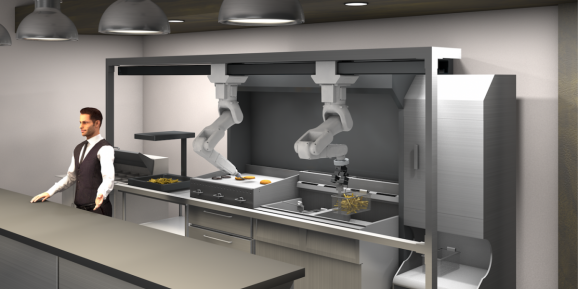
Miso Robotics just unveiled Miso Robot on a Rail (ROAR) to help restaurants automate their kitchen tasks. This is an improvement over Flippy, which was fixed to a ground-mounted base. Miso’s ROAR, on the other hand, is set on top of a movable rail. It also costs only 50% of what Flippy does, and restaurants can purchase it for $30,000. It can easily be installed on a floor or below a standard kitchen hood.
Restaurants will find that the robot will help automate many things that their staff often have to do, freeing up time and valuable man-hours. Most importantly, it will enhance kitchen productivity and boost revenue by processing more orders per hour.
How does Miso’s ROAR work, and what does it do?
ROAR can work two stations and communicate with a cold storage hopper. The robot runs on Miso AI, which is the Miso Robotics’s cloud-based platform. It comes with several cookable food categories such as potato wedges, corn dogs, cheese sticks, French fries, chicken tenders, etc. It can prepare hundreds of orders in less than an hour.
Here are some of the specific functions that the robot is designed to perform:
- It uses multiple cameras and safety screeners to transform frozen food and cook it, with no human intervention.
- When the recipe is cooked and ready, it notifies nearby workers so that they can take the orders to the customers.
- ROAR also scrapes grills, drains excess oil and skims oil as well.
- The inherent AI helps the robot to recognize and monitor items such as burger patties, which need to be treated differently.
Miso Robotics assures that its robots will not replace human workers
Miso Robotics is based in Pasadena, California, and the startup has already raised $15 million. While restaurants are eager to implement automation to reduce costs, employees often fear that automation will result in job loss. Miso Robotics assures those who are worried they may lose jobs, that such a scenario is not going to happen. It asserted that robots only boost productivity by working with humans, and not be replacing them.
One needs to wait and watch how true this claim is, as automation has already resulted in a decent number of job losses. However, robots have also helped companies to generate more profits and expand, giving new opportunities for job creation.










